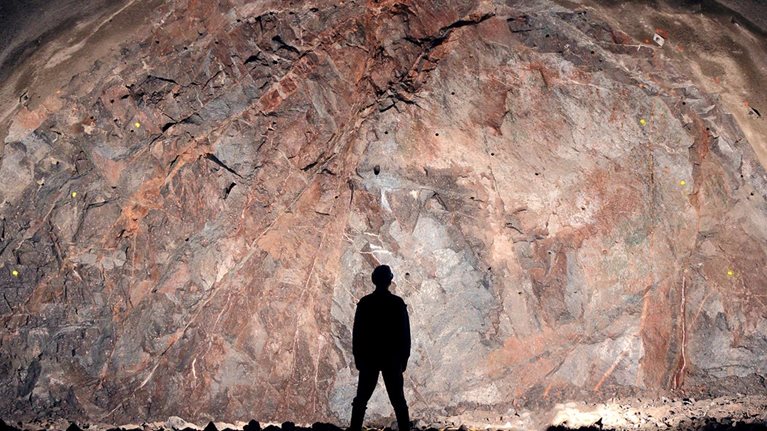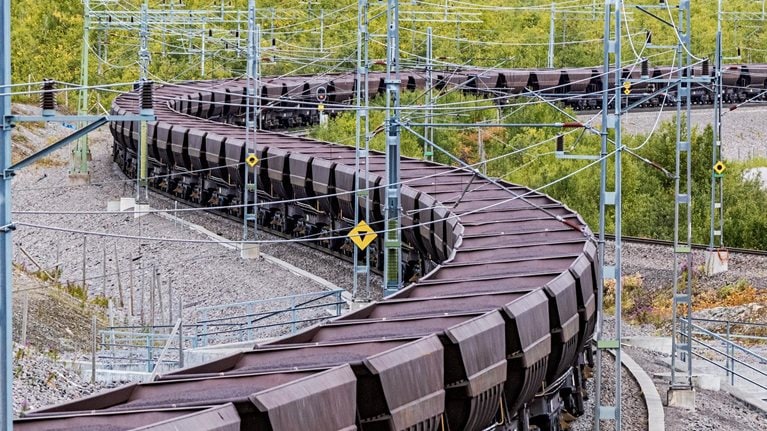Currently, the extractive industries are facing critical labor shortages1 as innovative ways of working and new skills profiles are becoming increasingly important to the sector’s future, including sustainability, digital and analytics, and capital productivity. Despite these imperatives, our latest research reveals obstinately slow progress in recruiting, retaining, and advancing diverse talent within the mining industry. Meanwhile, public voices in some countries (including the United States) are questioning the value of diversity, equity, and inclusion (DEI) relative to other priorities such as inflation and are, in some cases, even challenging the legality of initiatives that advance DEI.2
Against this backdrop, it is pertinent to remember why those who champion DEI do so in the first place. Beyond the moral imperative to ensure equal access to opportunities (relevant in all contexts but especially so for mining companies in remote settings or operating on Indigenous land), DEI has been proved to benefit business performance. Companies in the top quartile for racial diversity are 36 percent more likely to financially outperform those in the bottom quartile. Likewise, companies with gender-diverse leadership are 25 percent more likely to outperform their least-diverse peers.3 Diverse teams have been linked to better decision making and higher employee satisfaction.4 Perhaps most notably, BHP has found that diverse mining crews at its sites have a 67 percent lower injury rate than nondiverse teams.5
In 2021, we published research showing that although the mining industry is attracting women through motivating and well-paid work, it is not effectively sponsoring and promoting them, eroding the diversity of the talent base.6 Three years on, we have rerun our global survey with a more expansive data set of approximately 500 respondents across 44 countries, spanning the full range of mining functions and corporate hierarchies.
Where we stand
Unsurprisingly, we found that diverse talent remains underrepresented at all levels within mining companies. That said, there are a few bright spots, including actions taken to improve the experience of diverse employees (such as outreach to diverse groups and incorporating DEI within board meeting agendas) and examples of companies embarking on ambitious DEI journeys. Since 2017, multiple companies have boosted the proportion of women they employ. BHP, for instance, increased the percentage of women employees from about 21 percent to 32 percent from 2017 to 2022, Teck from 17 percent to 24 percent, and Anglo American from 19 percent to 24 percent.7 McKinsey even began a DEI initiative within its own Global Energy & Materials Practice (see sidebar, “DEI transformation initiative at GEM”).
Despite the mining industry’s significant efforts via such initiatives to introduce greater gender balance and boost talent diversity generally, it has a long way to go to match other industries’ progress on diverse representation. For example, women fill about 12 percent of the C-suite positions across more than 2,000 global publicly traded mining companies, up only 1.6 percentage points since 2021.8
Attracting diverse talent to mining
Why do people join the mining sector in the first place, and how can it increase talent diversity? Across all mining professionals, the ability to grow and be challenged and competitive compensation are the top two reasons cited in our survey and are given roughly equal weight among diverse and nondiverse talent (Exhibit 1).9 However, beyond those top two reasons, diverse and nondiverse talent diverge when considering other attraction factors.

Perhaps surprisingly, diverse respondents in our survey were more interested in travel opportunities (a significant consideration for companies in terms of attracting employees and worker flexibility) than their peers who are White men. There are two caveats, however. First, the opportunity to travel is considered much more important for diverse talent in North America and Europe than elsewhere. While it is the primary attraction factor for diverse talent in North America (44 percent), it ranks only fourth in South America (17 percent). Second, an interest in travel is paired with an expectation of flexibility and openness to “hybrid” models of work. This has obvious limitations when it comes to equipment operator and maintenance roles, but mining companies can be more flexible when it comes to traditional engineering, planning, administrative, and other desk-based roles. Mining companies we have spoken to range from those that are fully “back in the office” and onsite for these types of roles to those operating in “three weeks at home, one week onsite” models. Given that some 65 percent of diverse respondents in our study considered a lack of flexibility in the work model to be a top-three challenge in attracting new talent into mining, this is something to experiment with as companies seek to broaden their hiring pools.
Equally of note is the increased interest in the impact of environmental, social, and governance (ESG) issues in the context of diverse talent. Mining companies that lead on community engagement and environmental stewardship will have a substantial advantage in the race for talent: our survey found that 30 percent of diverse talent cite a positive contribution to ESG as a reason to join the industry versus 14 percent of nondiverse talent, as shown in Exhibit 1. Highlighting successes on these fronts as part of recruiting conversations can help diverse talent see a new side of an industry that has long been branded as destructive, polluting, and alienating to local people. Bringing in diverse viewpoints can then further help build innovations for sustainability and greater community credibility.
Retaining diverse talent in mining
The good news is that the willingness of diverse employees to remain in the industry has significantly increased over recent years: 75 percent of diverse talent expressed an intention to remain with their companies for the foreseeable future in 2023, compared with 66 percent in 2019 and 2020. This holds true at all levels except for the board level and C-suite, which have seen a slight dip. Of the diverse talent wishing to stay, their principal motivation is interesting work (Exhibit 2). Companies can maximize this retention lever by ensuring that all employees have opportunities to continue to grow and be challenged—be that through rotations, being given new tasks within their roles, having opportunities to engage with different functions or more-senior leadership, or learning and development programs that are of interest to them.

A sizable minority in our data set has remained frustrated with their advancement opportunities. Plenty of research over the years has demonstrated that the bar for promotion can be measurably higher for diverse talent than for members of the “old boys’ club”—a refrain that we heard repeatedly during our research. According to multiple research projects, women are rated lower than men on the measure of future performance and promotability, making women 13 to 14 percent less likely to be promoted in the future.10 When diverse talent misses out on promotions or sees diverse leaders and peers they admire fail to advance within their organizations, this builds into a retention challenge over time.
Cultural fit is another significant factor influencing the decision to leave, cited by nearly a third of respondents considering quitting the industry. Employees are asking themselves whether they can bring their full selves to work (for example, their natural accent or way of communicating, their faith, or any mention of their nontraditional family structure) and too often are finding that the answer is no.11 Microaggressions aside, the widely read Report into workplace culture at Rio Tinto demonstrates that there are still giant strides for the industry to take in ensuring basic safety from sexual assault and racial abuse.12 First, companies are encouraged to take a look at some of the structural basics: Are there sufficient single-sex facilities, such as bathrooms and changing rooms, with restricted access? Are rooms in camp properly secure? Are we creating shift structures and departments in which diverse employees will often be an “only,” putting them at greater risk of ostracization or abuse? A shockingly low proportion of both diverse and nondiverse employees in mining believe their companies have a welcoming culture.13 Second, companies can launch a cultural transformation to promote inclusion (including articulating the vision by senior leaders, communicating the importance of role models, and celebrating diversity beyond just gender—a concept we call “neutral inclusivity”) and psychological safety.
Advancing diverse talent in mining
As we have seen, diverse employees are still encountering obstacles to progressing their careers in mining, a situation that is evident from the sparse diversity representation within managerial roles. Whereas almost half (45 percent) of the nondiverse talent surveyed reported active support for promotion, only a third of diverse employees felt the same (Exhibit 3). Moreover, 17 percent of diverse employees feel unsupported or actively undermined, nearly three times higher than the rate among nondiverse employees. The survey also found that the level of support is inconsistent among different ethnicities. Interestingly, Latino employees report the highest levels of support (46 percent are actively supported versus 33 percent on average), whereas 32 percent of Black employees report being actively supported. At the same time, Black employees report experiencing no support 1.5 times as much as the average among diverse talent (16 percent versus 10 percent).

One of the critical success factors for promotion is sponsorship, which is defined as leaders willing to create opportunities that will position an employee for advancement. On average, both diverse and nondiverse employees have a similar number of sponsors (about 1.8 each). However, those likely to stay in the industry have an average of 2.0 sponsors, those who are undecided have 1.6, and those leaving the industry have fewer still at 0.9. Overall, respondents report an increase in the number of sponsors compared with 2021 (up by 0.6 for diverse respondents).
While this rise is encouraging, there is also an opportunity to explore the sponsorship role itself more fully: 61 percent of diverse respondents consider their direct manager to be a sponsor, which one hopes would be table stakes. Those feeling sponsored within their company often mentioned that the most powerful role their sponsor played was to encourage them to apply for new roles and rotations—the sentiment of “unless I know I meet 100 percent of the criteria, I will not apply” was countered by the confidence of a sponsor.
A path forward to bridging the diversity gap in mining
There is no quick fix to improving diversity in the mining sector. To make meaningful progress, mining companies need an enterprise-wide approach across culture and the employee life cycle.
How can companies start? By now, many companies are familiar with “enterprise transformations” that seek to turn their performance around. When companies face a seemingly insurmountable performance challenge, the key to overcoming it tends to involve certain success factors: an executive-level ambition; a detailed initiative-based road map to get there across both “hard” (for example, process, purchasing, or pricing) and “soft” (for instance, culture, training, or performance management) themes; initiative owners at all levels and in all functions of the organization; a weekly cadence of progress tracking supported by a “single source of truth” project management tool; and leadership’s close attention to break down barriers to success and promote accountability.
Over recent years, many improvements have been made to increase DEI in mining. Nevertheless, opportunities for improvement abound. It is important not to lose momentum in building a safe, diverse, and inclusive environment for everyone in the mining industry and in the global communities that support it. Those companies that lead in fostering a diverse employee base will have an edge in the competition for talent and will gain meaningful advantages in terms of safety, productivity, innovation, and leadership.


